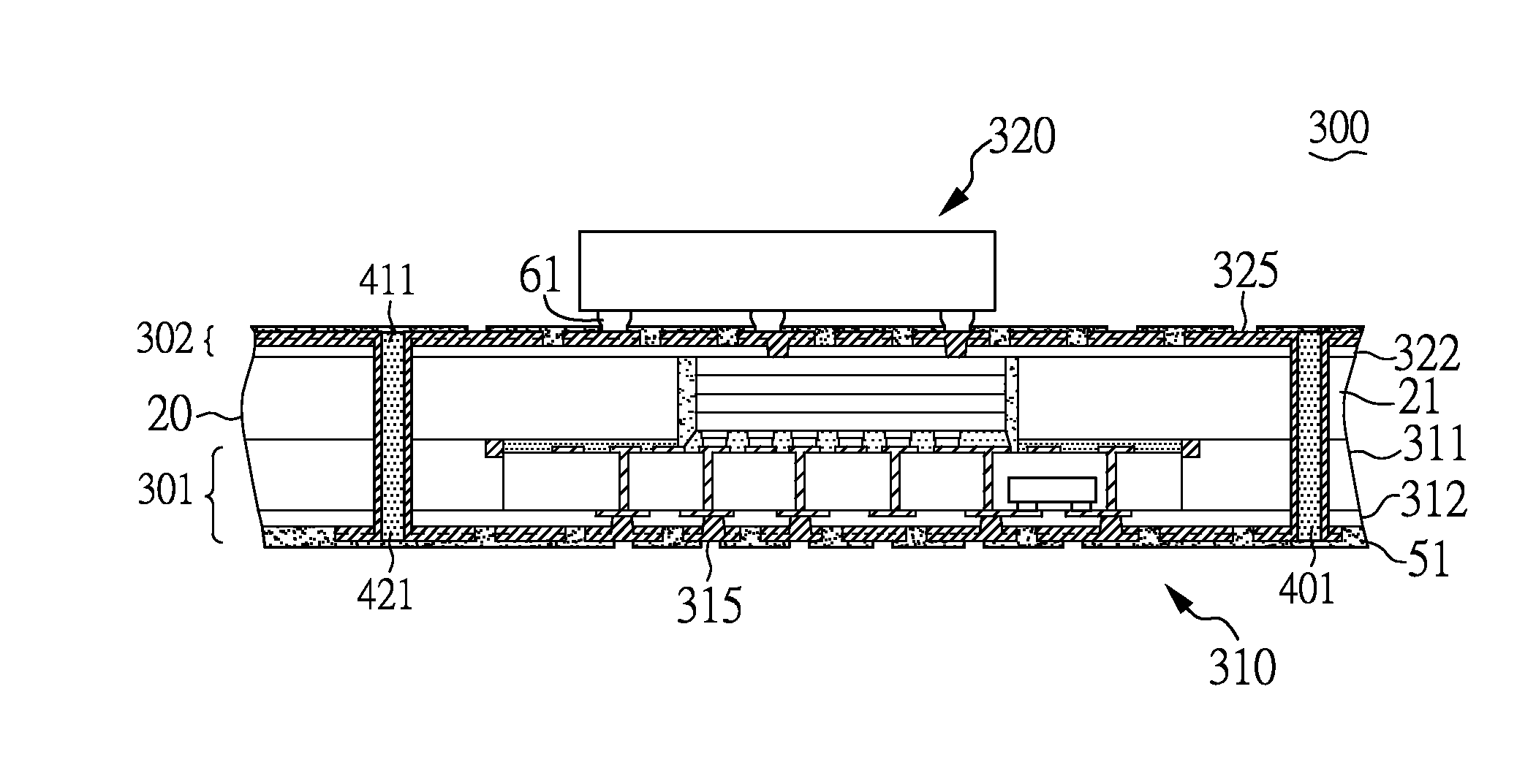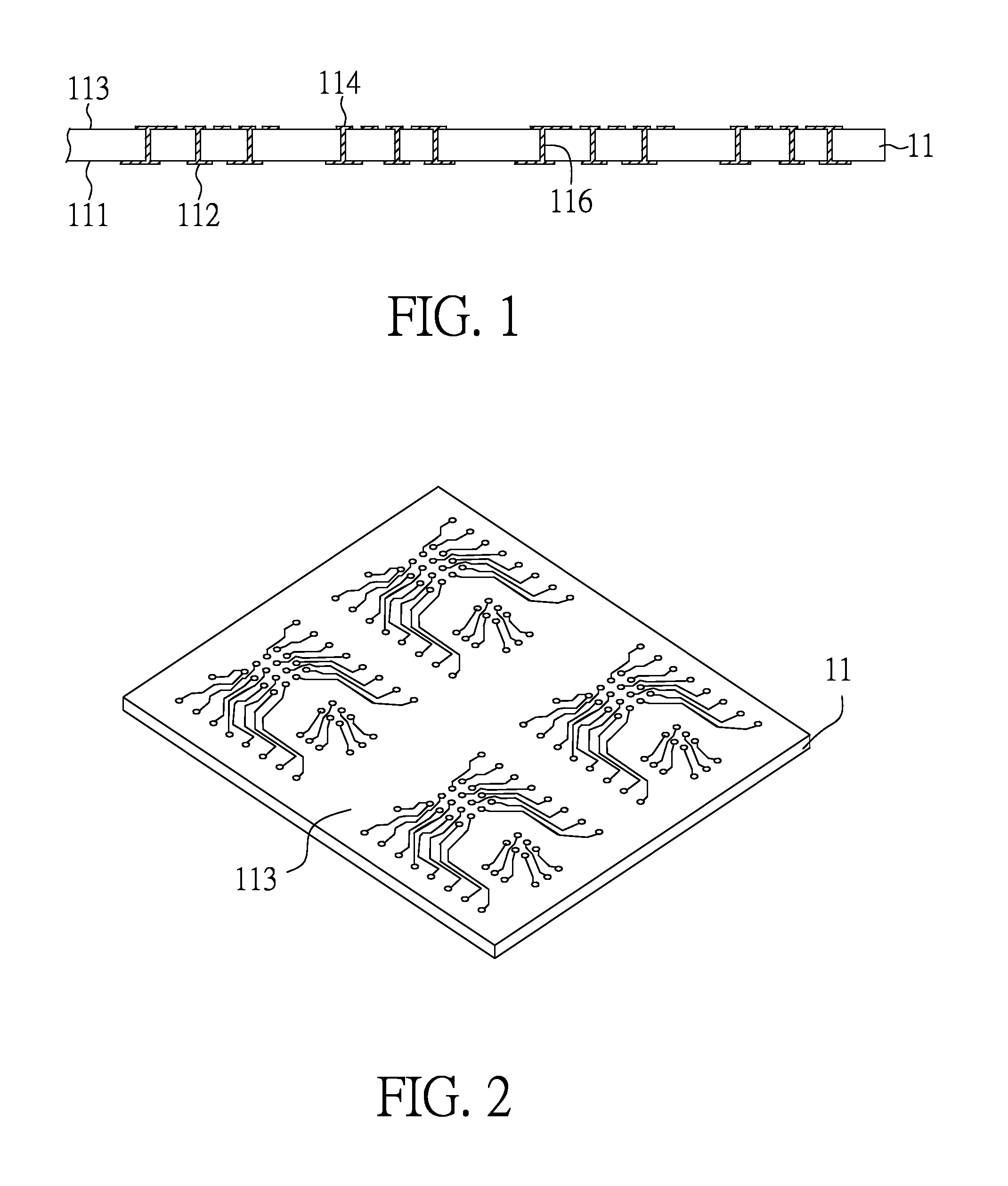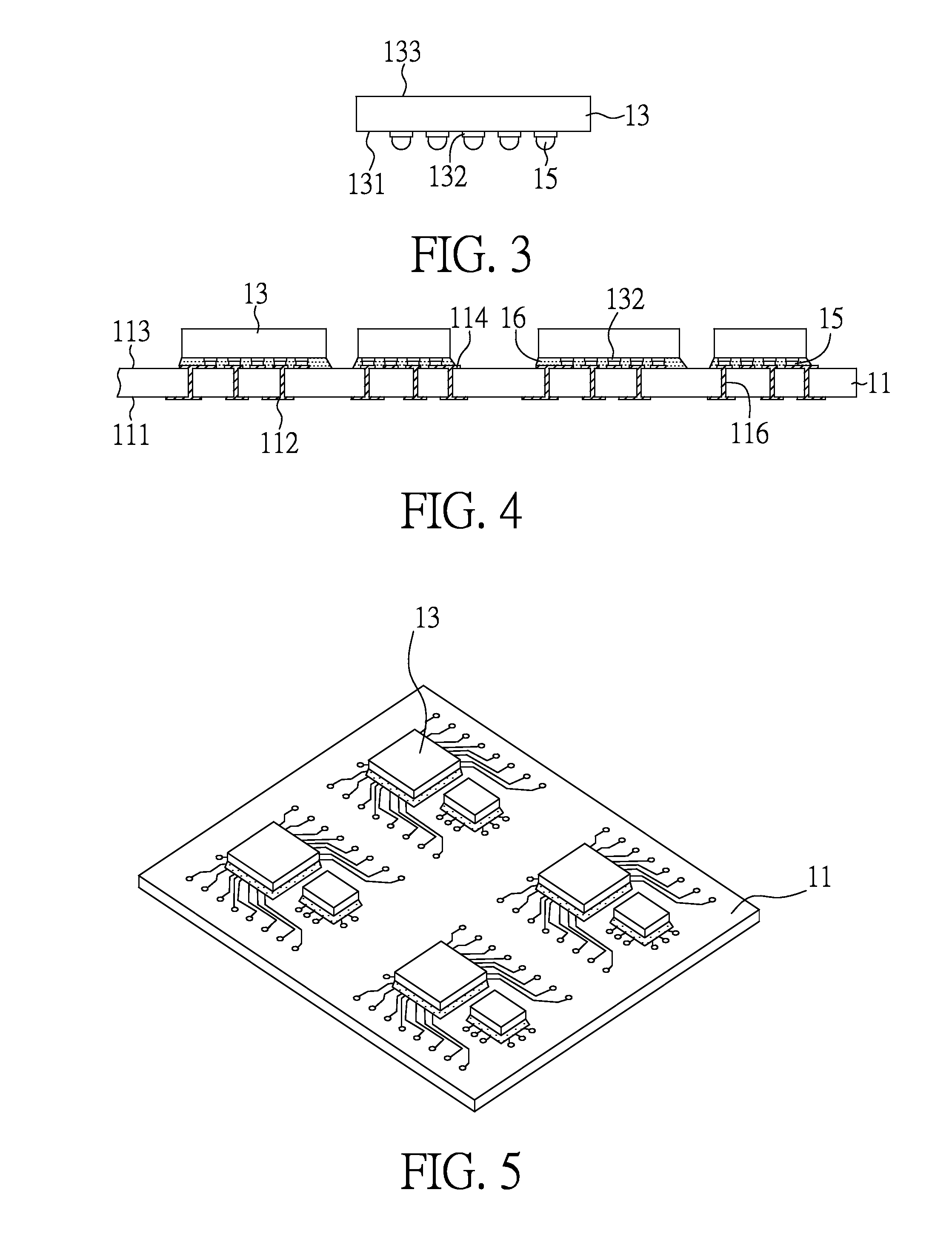Semiconductor package with package-on-package stacking capability and method of manufacturing the same
a technology of semiconductor packaging and stacking capability, applied in the manufacture of printed circuits, basic electric elements, solid-state devices, etc., can solve the problems of significant thermal, electrical and reliability challenges in the semiconductor packaging industry, many manufacturing yield-related deficiencies remain, and shortening between neighboring countries
- Summary
- Abstract
- Description
- Claims
- Application Information
AI Technical Summary
Benefits of technology
Problems solved by technology
Method used
Image
Examples
embodiment 1
[0057]FIGS. 1-17 are schematic views showing a method of making a semiconductor package for package-on-package stacking, that includes an interposer, semiconductor devices, a base carrier, dual buildup circuitries and plated through holes in accordance with an embodiment of the present invention.
[0058]As shown in FIG. 17, the semiconductor package 110 for package-on-package stacking application includes an interposer 11′, semiconductor devices 13, a base carrier 20, a first buildup circuitry 301, a second buildup circuitry 302 and plated through holes 411. The interposer 11′ and the semiconductor devices 13 are attached to the base carrier 20 using an adhesive 191, with the semiconductor devices 13 positioned in through openings 205 of the base carrier 20. The first buildup circuitry 301 covers the interposer 11′ and the base carrier 20 from the lower side and is electrically coupled to first contact pads 112 of the interposer 11′ through first conductive vias 317, whereas the secon...
embodiment 2
[0076]FIGS. 19-27 are schematic views showing a method of making another semiconductor package with package-on-package stacking capability which has a registration mark for interposer attachment and horizontal and vertical EMI (electromagnetic interference) shields for the semiconductor devices in accordance with another embodiment of the present invention.
[0077]For purposes of brevity, any description in Embodiment 1 above is incorporated herein insofar as the same is applicable, and the same description need not be repeated.
[0078]FIGS. 19 and 20 are cross-sectional and bottom perspective views, respectively, of a base carrier 20 having through openings 205 and a registration mark 237. The through openings 205 extend through the base carrier 20 between the first surface 201 and the second surface 203 thereof, and the registration mark 237 is formed on the first surface 201. In this embodiment, the base carrier 20 includes a conductive layer 23 (typically a copper layer) on the side...
embodiment 3
[0088]FIGS. 29-38 are schematic views showing a method of making yet another semiconductor package with package-on-package stacking capability in which the base carrier is fabricated from a laminate substrate in accordance with yet another embodiment of the present invention.
[0089]For purposes of brevity, any description in the aforementioned Embodiments is incorporated herein insofar as the same is applicable, and the same description need not be repeated.
[0090]FIGS. 29 and 30 are cross-sectional views showing a process of forming a registration mark on a dielectric layer in accordance with an embodiment of the present invention.
[0091]FIG. 29 is a cross-sectional view of a laminate substrate that includes a dielectric layer 21 and a metal layer 25. The dielectric layer 21 typically is made of epoxy resin, glass-epoxy, polyimide or the like, and has a thickness of 0.5 mm in this embodiment. The metal layer 25 typically is made of copper, but copper alloys or other materials (such as...
PUM
 Login to View More
Login to View More Abstract
Description
Claims
Application Information
 Login to View More
Login to View More - R&D
- Intellectual Property
- Life Sciences
- Materials
- Tech Scout
- Unparalleled Data Quality
- Higher Quality Content
- 60% Fewer Hallucinations
Browse by: Latest US Patents, China's latest patents, Technical Efficacy Thesaurus, Application Domain, Technology Topic, Popular Technical Reports.
© 2025 PatSnap. All rights reserved.Legal|Privacy policy|Modern Slavery Act Transparency Statement|Sitemap|About US| Contact US: help@patsnap.com



